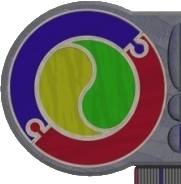 |
|
 |
| |
Computer Systems
eXercise #6
Monitors and Display
- Explain how the computer is able to distinguish between the keypresses
"d" and "D"
- Regarding the operation of a FIFO structure:
- Using an example from the 'real world' describe the action of
a FIFO structure, and suggest why it is appropriate as the Keyboard
Buffer
- How does the FIFO structure differ from a LIFO structure, and
why is the latter inappropriate as a Keyboard Buffer?
- Of the presented VIDEO standards, it is said that MONOCHROME adapters
present better text - why is this so?
- Suppose we were designing a Video Subsystem, capable of 1280x1024
resolution, 32K colours (16 bits per pixel = 4 bits per colour + 4
bits for intensity).
- Calculate the memory requirements for a single full screen,
full colour image.
- Suppose we wanted to stream full colour, full resolution video
to this monitor at 50 Frames per second. How much storage space
(UNCOMPRESSED) would this clip take up?
- Would we be using RASTER or VECTOR display to show the video?
- Complete the following colour 'sums' using the ADDITIVE Spectra
- RED + GREEN
- GREEN + BLUE
- BLUE + RED
- CYAN + RED
- MAGENTA + GREEN
- YELLOW + BLUE
- Decode the following TEXT CELLS
- 00,99,BD,FF,BD,99,00,00 hex
- 1F,04,74,84,84,B4,90,90 hex
- Design your own text cell (8x8 pixels) and invent your own 'recipe'
for that character
- Suppose you were advising a friend on what 'accessories' to add
to his/her new 'bare bones' computer.
- List 10 components (either input, output or storage) you would
suggest IN ORDER OF IMPORTANCE (assume price is not an issue)
- For the TOP 5 components, describe IN PLAIN ENGLISH why they
would be an advantage - AVOID technobabble, merely present the
facts.
- Suppose a Flatbed scanner captures images in FULL COLOUR (ie. 24
bits/pixel). Suggest the dimensions (in PIXELS) of the LARGEST 'squarish'
image we could scan such that it would still fit on a 1.44Mb Floppy
Disk. (Hint: pick a width and then calculate a corresponding height)
|
|
|
 |
|
 |
|


